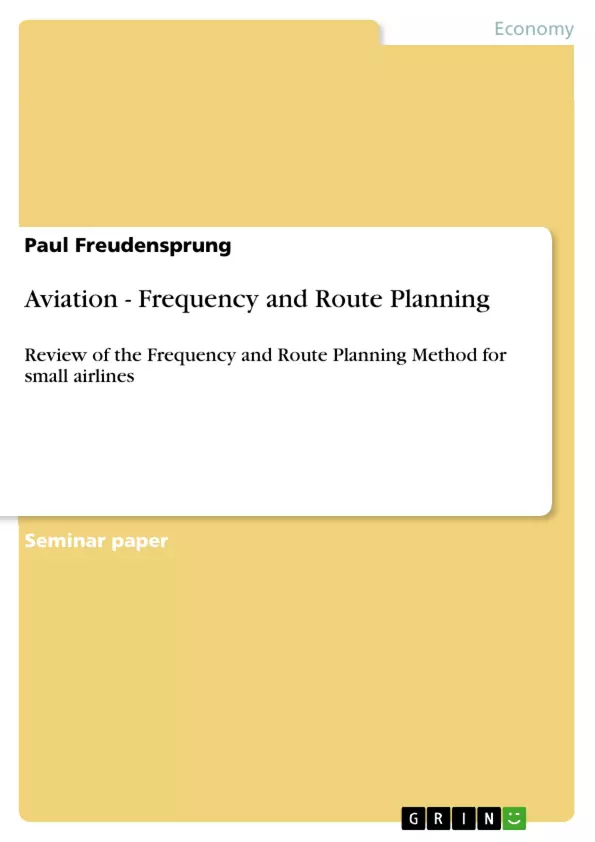This paper reviews the conceptual basis of the heuristic model for frequency and route planning for small size airlines developed by Ghobrial et al (1992). Particularly it is referred to scheduling issues for airline hub operations as outlined by Dennis (1994).
Consequently a number of critical issues are raised that could improve the heuristic model above. A number of additional variables could influence scheduling decisions and should be incorporated into the model. For instance, small size airlines can be affected by the scheduling necessities of hub-and-spokes operations of larger carriers, when they are providing services into major hubs. Furthermore, the optimal network for a small size carrier can be hub-and-spokes type network constructed around a
regional hub. This case is not specifically included into the model.
Inhaltsverzeichnis (Table of Contents)
- Introduction
- Characteristics of model developed by Ghobrial et al (1992)
- Innovative points of the model
- Critical considerations of the model
- Identifying routes (links) above the break-even level
- Flight-time variations
- Aircraft type
- The ‘ground-time minimisation' objective – cost of time
- The 'ground-time minimisation' objective – total cost driver
- Congestion and concentration
- Creation of flight banks or waves
- Pivot - First daily flight
- Demand stimulation
- Competition & partnerships
- Conclusions
- References
Zielsetzung und Themenschwerpunkte (Objectives and Key Themes)
This paper reviews the heuristic model for frequency and route planning for small airlines developed by Ghobrial et al (1992) and its applicability to the scheduling issues for airline hub operations. The main objective is to analyze the model's strengths and weaknesses, highlighting critical issues and potential improvements. Key themes explored include:- The model's limitations in handling hub-and-spoke operations and its suitability for small airlines operating in low-density markets.
- The importance of considering additional variables that influence scheduling decisions, including the impact of larger carriers' hub operations and the optimal network structure for small airlines.
- The need to incorporate the concept of ground-time minimization and its impact on total cost.
- The significance of demand stimulation, competition, and partnerships for small airlines.
Zusammenfassung der Kapitel (Chapter Summaries)
- Introduction: This chapter outlines the importance of frequency planning and aircraft routing for airlines, highlighting the need for efficient planning methodologies to gain a competitive advantage. It discusses the evolution of flight schedule development, particularly the shift from point-to-point networks to more complex hub-and-spoke structures.
- Characteristics of model developed by Ghobrial et al (1992): This chapter describes the model's development as a post-deregulation planning tool for small airlines operating in low-density markets. It emphasizes the model's two-phase structure and its focus on achieving economic equilibrium between passenger demand and aircraft operating characteristics.
Schlüsselwörter (Keywords)
This paper examines key aspects of frequency and route planning for small airlines. The primary focus is on the heuristic model developed by Ghobrial et al (1992), its limitations in handling hub-and-spoke operations, and the impact of additional variables on scheduling decisions. Key concepts include:- Frequency and route planning
- Heuristic models
- Small airlines
- Hub-and-spoke operations
- Ground-time minimization
- Quote paper
- Paul Freudensprung (Author), 1998, Aviation - Frequency and Route Planning, Munich, GRIN Verlag, https://www.grin.com/document/186327



